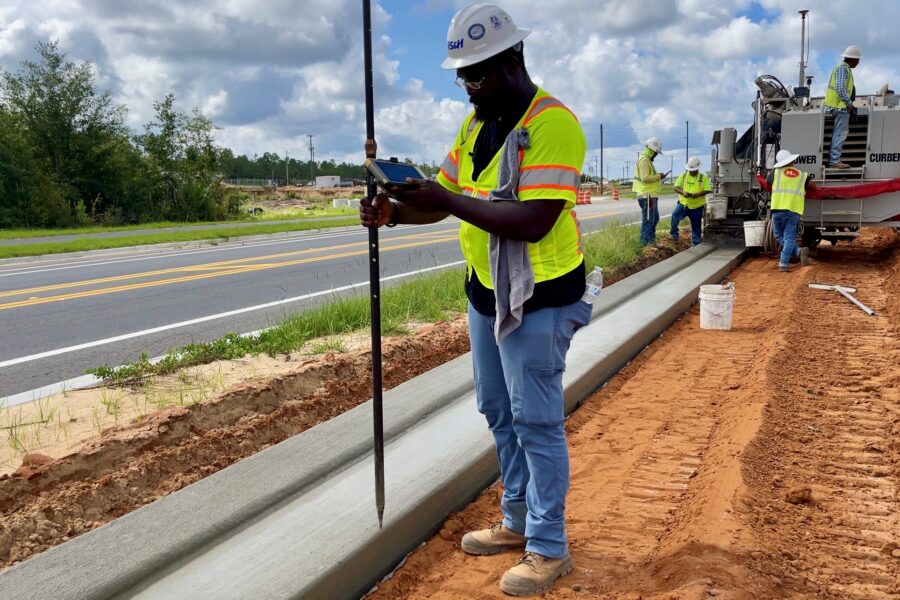A Tolling Agency’s Guide to a Successful Marketing Strategy

Toll-related marketing and communication is not exactly going to earn your toll agency the same recognition or adoration as marketing for commercial brands like Amazon or GEICO – nor do toll agencies typically allocate that kind of money towards marketing and communication activities.
However, marketing new road openings, communicating the advantages of opening a transponder account, or providing timely information about an incident is no less important, especially to your toll-paying customers.
Here are some key elements to keep in mind when planning your agency’s marketing and communications strategy.
Get the Help You Need
Typically carrying a staff of five or fewer marketing and communications personnel, it’s important that toll agencies have the right help to accomplish their marketing and messaging needs.
While many toll agencies lean on the expertise of a local marketing or public relations firm to help with research, branding and crafting important customer communications, it is important you choose a firm who can handle your specific needs. They need to understand your business (e.g. toll operations, business rules, account types, toll road locations, toll road configurations, transaction volumes, stakeholders, audience, etc.), or be committed to working side-by-side with your agency to learn it over time.
Many toll agencies will often incorporate tolling consultants to fill gaps in toll-related expertise, and partner with state departments of transportation and their communication staffs, where appropriate and beneficial, to coordinate marketing and communications initiatives.
More than anything, allow your marketing firm to do what they do best: marketing and communications. Lean on your firm to lead talking point development, strengthen and focus messages, write copy and be creative.
Know Your Customers
Understanding your customer is critical to creating a robust communications plan. Research is not only used for the purpose of learning, but it is also a critical component needed to make good decisions.
Because conducting market research such as customer surveys and focus groups is expensive and time-consuming, it is a critical step that often gets skipped altogether.
But successful marketing and communication strategies are based on a solid understanding of your customer base. In order to develop a robust marketing and communications strategy, it is critical to understand key aspects about your toll-paying customers, especially when introducing tolls into a previously toll-free area.
Through customer surveys, focus groups, crowdsourcing and other techniques, agencies can better understand critical details about their operation and their customers, including but not limit to:
- Do your customers recognize your transponder brand or know what a transponder is or does?
- Do they understand how your new Express Lane works?
- Do they have a favorable or unfavorable view on tolls?
- Do they have a favorable or unfavorable view on your agency’s toll operation?
- Do they like your account management website?
- Do they use social media regularly?
- Do they know how much they owe on their image-based toll invoice and the consequences of not paying?
- Do they understand where to pay their toll violation, and what payment methods you accept?
It is important to understand what you are doing right and, more importantly, identify areas to focus your communications to make your customers better informed. Therefore, it’s necessary to conduct the research, analyze the data, develop the strategy and messaging based on the research and data, and then do more research to make sure you’ve got it right. The time and money spent on the front end to get it right will pay dividends in the future.
Spend the Time – and Money – to Develop a Winning Communications Strategy
The clarity, focus and quality of communications with your customers begins with a strategic communications plan. It’s a critical document that all too often gets overlooked – if it even gets developed.
Your communications plan should also layout key messages and talking points that reflect your agency’s bigger picture goals and brand identity. At a minimum, your communication strategy should include:
- Key goals and objectives for your agency’s communication and outreach initiatives
- Outline of key communication tactics and outlets/media to target your audience
- Strategy for partnering with media organizations on proactive and reactive communications
- Key messages and talking points, as well as messengers
- An internal communication approach that ensures consistency in messaging across all departments/disciplines
- Crisis communications plan
- Community outreach strategies
- Communications timeline
- Evaluation benchmarks to measure your success
Your communications plan is your opportunity to define your audience, set specific goals, document strategies, plan for misfortune, outline communication channels and focus on key audience members whom you wish to influence.
Also, keep in mind these communication basics:
1. Be consistent and transparent
In order for your customers to know and trust you, it is imperative that your communications are consistent and transparent. Regardless of what communication media or tool you’re using, consistency in your message is your ally. Consistency through reliability and recognition builds trust with your customers.
2. Be proactive in communications with your customers
Did a recent change to your back office system result in double-charges for a few thousand transponder-based customers? Is a long-awaited road opening going to be delayed another six months due to construction delays? Regardless of what is going on within your toll operation, if it affects your customers, they are going to know about it – often before you would like.
Therefore, it’s best that you proactively preempt any negative press or messages floating around on social media. It’s important that you control the narrative, and proactive communication allows you to set the tone for how your customers perceive you. And, it’s appreciated by your customers. While they may not like what you have to say, proactive communication presents a sense of transparency and honesty.
3. Repeat, repeat, repeat
Once you understand your audience, have an established communication strategy and identified key talking points and messaging, repeat your messages and maintain a consistent presence with your customers. Do not be afraid of inundating customers with repeated messages, whether it’s via paid or earned media, e-mail or social media.
It takes a lot of time and money to schedule communication campaigns, lay out a media calendar, understand what message resonates with your customers, fine tune and do it all again. But the end results are worth the time and money, as you build your brand identity and a customer base that understands and trusts you through consistent messaging.
4. Humanize your agency
Whether through creativity, humor or just by being relatable to your customers, it is beneficial to humanize your agency with your customers. It is important for your customers to know that real people are operating your agency and toll facilities.
5. Use social media
It’s estimated that 60 percent of the U.S. population now has a smartphone, and 70 percent of the global population is expected to have a smartphone by 2020. Additionally, it is estimated that 77 percent of the U.S. population in the United States has at least one social networking profile.
In addition to traditional communication media, it is critical that your agency adopt and utilize social media (e.g. Twitter, YouTube, Instagram, Facebook, etc.) to communicate with your customers.




